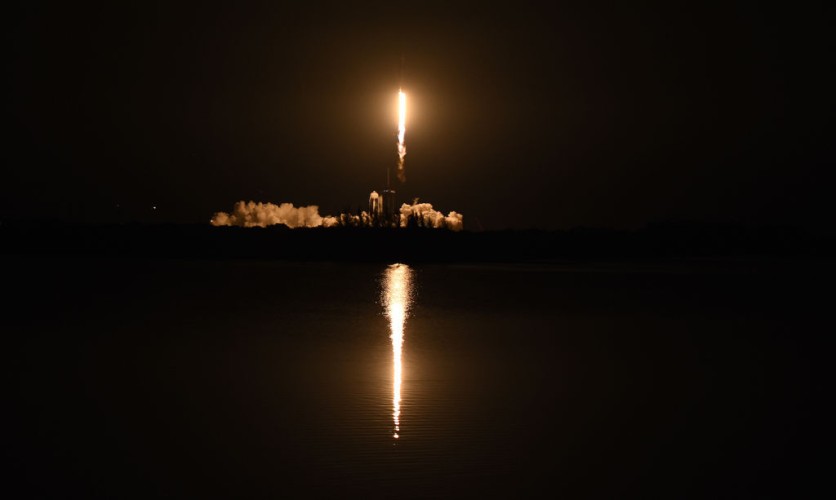On a hectic day for the U.S's space industry, SpaceX has successfully launched 59 small satellites aboard a Falcon 9 Rocket on Wednesday within just a minute before Boeing's Starliner crew capsule undocked from the International Space Station, prompting a landing in New Mexico to officially conclude a successful unpiloted test flight.

Successful Launch
The Falcon 9 rocket was launched from pad 40 at the Cape Canaveral Space Force Station exactly at 2:35 p.m. EDT, soaring away from 1.7 million pounds of thrust. The first stage of the launch, which is its eighth flight, has landed back at the launch site successfully after eight-and-a-half minutes.
When SpaceX was conducting its 22nd launch so far this year, the Starliner capsule has successfully undocked from the space station's forward port at 2:36 p.m., as noted by Space.com.
SpaceX traveled on a four-hour, 13-minute flight back to planet Earth. It will eventually land at the White Sands Space Harbor in New Mexico around 6:49 p.m. EDT or 4:49 p.m. local time.
It is worth noting that the Starliner program's initial test launch back in late December 2019 suffered software and communications glitches that deterred the spacecraft from docking with the space station and prevented its rendezvous. Although another test was planned for August 2021, it was unfortunately scrapped because of corroded propulsion system valves.
But now, SpaceX seems to have corrected all its mistakes in the past. All of their 59 payloads were sent into orbit just around 75 minutes after liftoff, according to SpaceX representatives.
Rideshare Mission
The "rideshare" mission is called Transporter 5, which is responsible for carrying a variety of small satellites that were intended for multiple customers. Among those customers is the Canada-based GHGSat, a company that manages a network of spacecraft that detect methane emissions from space.
Terran Orbital Corporation's CubeSat Proximity Operations Demonstration (CPOD) was also added to the mix of satellites that were launched with Falcon 9 today.
The spacecraft demonstration mission was conducted to validate technologies that are necessary to "support rendezvous, proximity operations, docking (RPOD), servicing, and formation flight" through a pair of identical 3-unit CubeSats, detailed by Terran Orbital representatives in a statement.
Based on its number itself, Transporter 5 happens to be SpaceX's fifth small-satellite rideshare mission. The first Transporter 1 flew with 143 satellites to orbit back in January of last year, which holds the record for the highest number of payloads included on a single mission.
Transporter 5 is also the 22nd Falcon 9 launch of the company and the 155th rocket overall. According to SpaceX's description, the launch is also the eighth flight of the Falcon 9's first stage.
There were two crewed launches to the International Space Station with the Transporter 4 as well, which was recently launched last month.
The mission holds great significance for SpaceX since they are aiming for humanity to colonize planet Mars and conduct several ambitious explorations in space. The reuse was a key priority for the company since it was applied to 12 different missions launched from Falcon 9's first stages before.
This article is owned by Tech Times
Written by Joaquin Victor Tacla
ⓒ 2025 TECHTIMES.com All rights reserved. Do not reproduce without permission.




